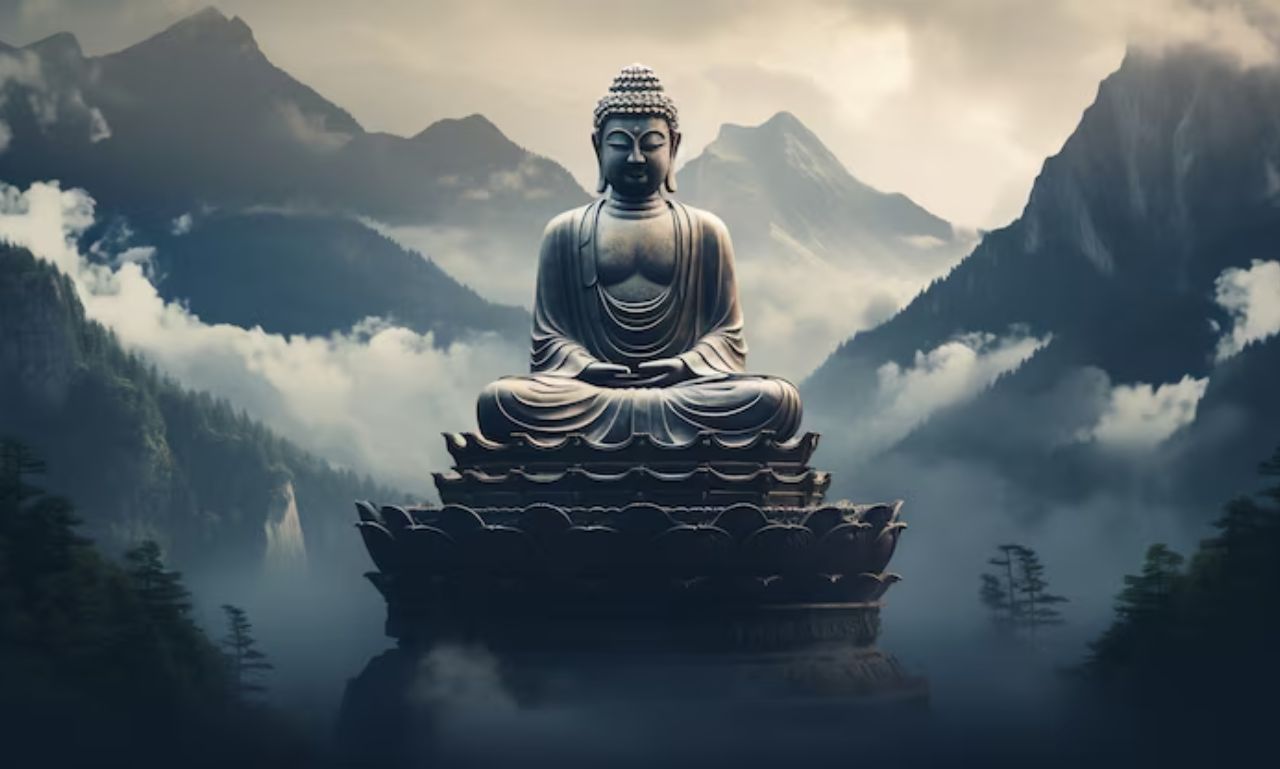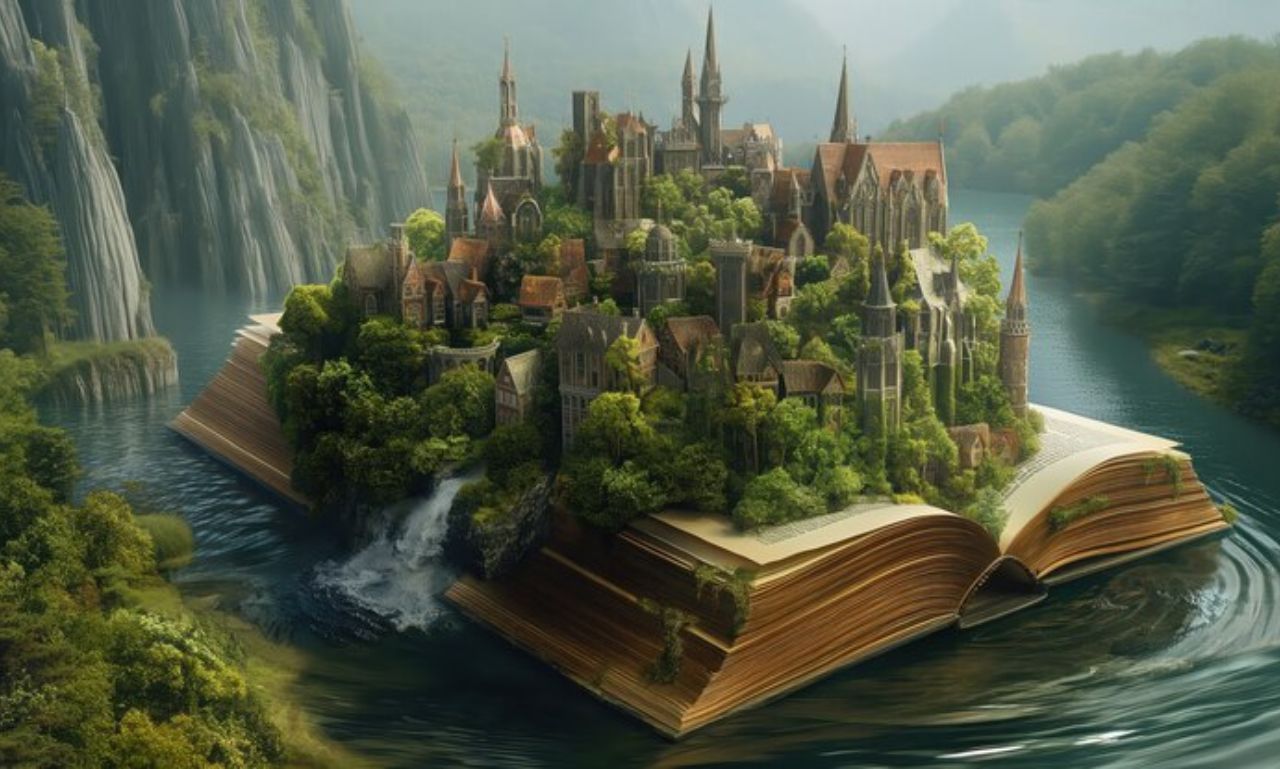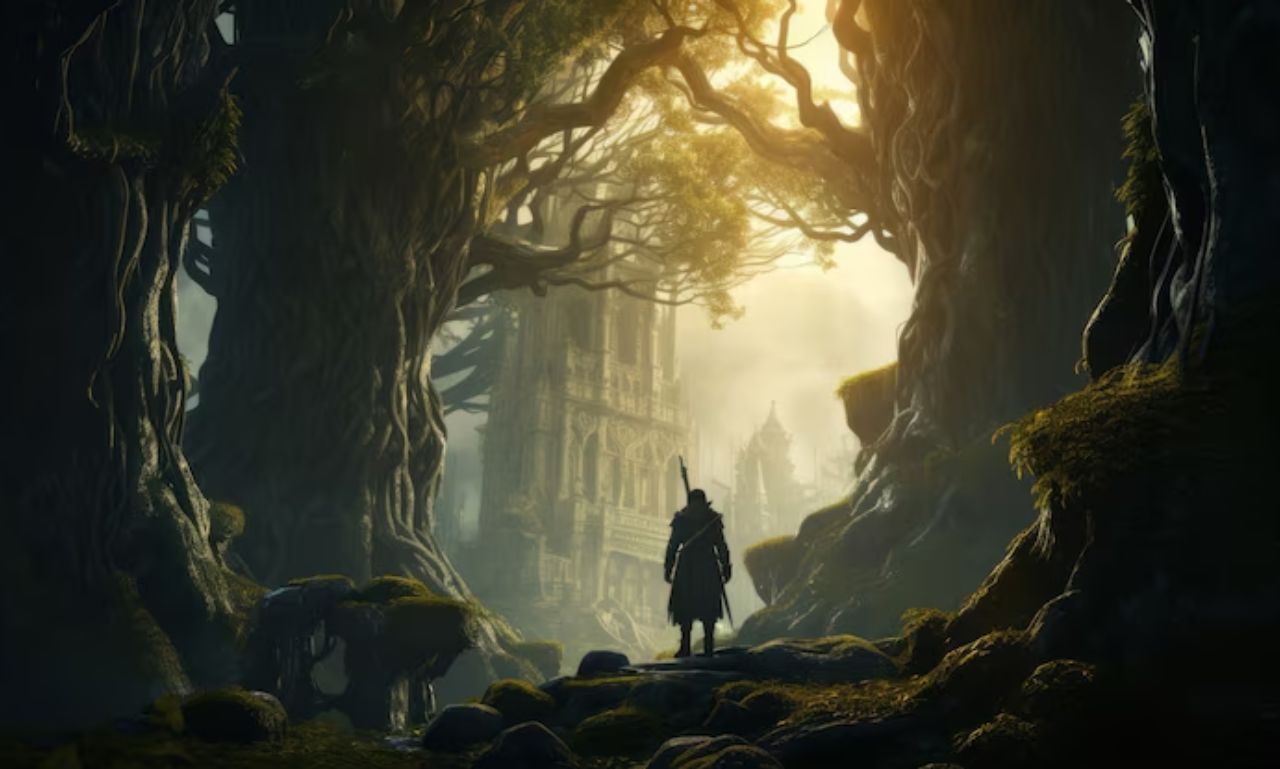The digital display of sacred images, such as imagesize:地藏王菩薩 1920×1080—a high-resolution visual depiction of Kṣitigarbha Bodhisattva, which is revered in East Asian Buddhist traditions—is one such potent example. In the digital age, this particular size, 1920×1080 pixels, has come to represent religious accessibility since it provides clarity, beauty, and symbolic resonance on displays of all sizes.
Known in Sanskrit as Kṣitigarbha, 地藏王菩薩 (Dìzàng Wáng Púsà) is a highly revered bodhisattva who is renowned for his commitment to protect beings from the torments of hell and to lead souls through the hereafter. His images, which have been modified for the modern world of cellphones, desktop computers, and digital altars, not only function as religious iconography but also as a portal for introspection, meditation, and inner peace when displayed in high definition formats like 1920×1080.
The Meaning of 地藏王菩薩 (Kṣitigarbha Bodhisattva)
The Bodhisattva known as the “Earth Treasury” or “Earth Store,” 地藏王菩薩, represents the essence of unending compassion and unflinching determination. He is frequently portrayed as a monk clutching a wish-fulfilling jewel in one hand and a khakkhara staff in the other. He is a symbol of perseverance, hope, and the salvation of all beings, particularly those who suffer in worlds beyond the physical, because of his spiritual commitment to not become a Buddha until all hells have been empty.
地藏王菩薩 is specifically associated with burial customs, prayers for the departed, and ancestral ceremonies in traditional beliefs. His picture is a powerful companion in everyday practice because he is more than just a figure of the afterlife; he is a symbol of the power of choosing service over self-liberation.
Why the 1920×1080 Image Resolution Matters
1920×1080, sometimes known as Full HD, is now a standard image resolution for all screens in current devices, including projectors, digital signage, laptops, and desktop monitors. Bringing sacred images into sharp, detailed focus for everyday reflection or ceremonial use is what it means to apply this resolution to Buddhist iconography.
A 1920×1080 image of 地藏王菩薩, in contrast to representations with lower quality or pixelation, shows the intricate details of his robes, the radiance surrounding his halo, and the symbolism woven into each piece of art. For practitioners, this clarity strengthens the image’s spiritual presence and increases its usefulness as a visual anchor for offerings or meditation. It transforms into a contemporary mandala rather than just a picture.
Digital Devotion: Images on Screens and Devices
Sacred imagery have naturally moved to the screen as more people use apps, online temples, and digital dharma discourses. Using imagesize:地藏王菩薩 1920×1080 as a desktop or phone wallpaper is not only aesthetically pleasing; it’s also a quiet practice. It protects space, acts as a visual reminder of kindness, and represents everyday intention.
High-resolution Buddhist images contribute to the preservation of the religion in tech-integrated lifestyles, whether they are utilized as a backdrop image, a slideshow for rituals, or a component of a virtual shrine. Even in digital form, they provide spiritual companionship around-the-clock.
Artistic Interpretations in the 1920×1080 Format
In order to replicate 地藏王菩薩 in both traditional and modern ways, artists from all across Asia—and increasingly from global digital communities—have adopted the 1920×1080 resolution. While some incorporate cosmic computer effects, illuminating orbs, or moving light lines surrounding the bodhisattva’s body, others preserve the elaborate gold-leaf patterns and traditional brushstrokes found in temples.
This spectrum of creativity demonstrates how the sacred can change without becoming less fundamental. Even when depicted with contemporary technologies, the Bodhisattva’s serene gaze, flowing robes, and dazzling aura are preserved. Every piece stands out thanks to HD’s use of vivid color schemes, which also enhance spiritual beauty and emotional connection.
Spiritual Symbolism Found in the Image
In addition to providing visual clarity, a high-resolution photograph of 地藏王菩薩 enhances the spiritual symbols found throughout his body. His call to everyone who suffers is symbolized by the khakkhara stick, which monks have historically used to announce their presence and awaken sentient creatures. The light emitted by the mani gem represents the wisdom that chases away evil.
The 1920×1080 compositions also frequently feature celestial backdrops, fire auras, lotus thrones, and bodhi leaves. Through the use of color and symbol to transition from vision to meditation, each of them improves the viewer’s capacity to internalize the lessons of 地藏王菩薩.
Cultural Reverence in China, Korea, and Japan
In East Asian Mahayana Buddhism, 地藏王菩薩 is highly esteemed. He is called upon to assist the ancestors’ souls and is connected to the Ghost Festival in China. In Japan, where he is referred to as Jizō Bosatsu, he is frequently regarded as the guardian of young people, tourists, and those who pass away too soon.
Practitioners in various cultures—and the diaspora—can bring the presence of 地藏王菩薩 into their homes and hearts wherever they are thanks to high-resolution photographs. Even in faraway places, generations have been reunited with their devotional legacy thanks to digital sharing.
Meditative and Ritual Use in Modern Practice
A 1920×1080 picture of 地藏王菩薩 can be used as the main focus of mantra recitations or guided meditations. The image becomes a medium for presence and calm, whether it is projected during communal rituals or shown on a monitor during chanting sessions.
People can use the image for everyday awareness in private settings. Clear and concentrated images are better for gazing meditation, which focuses on the Bodhisattva’s eyes or heart. It encourages a more thorough absorption into devotion and silence.
Virtual Shrines and Digital Offerings
Digital altars are now a common practice thanks to the growth of internet sanghas and Buddhist forums. The focal point of these virtual shrines is frequently a high-quality imagesize:imagesize:地藏王菩薩 1920×1080, encircled by prayer wheels, digital candles, or animated flowers.
On certain platforms, users can even write e-prayers or remarks next to the picture. The intention and energy are still there, even though the physicality is absent. within fiber optics, the bodhisattva’s vow reverberates with equal force as it does within the walls of the temple.
Educational and Cultural Significance
Educational establishments have started adding high-resolution photos like imagesize:地藏王菩薩 1920×1080 to their visual library, especially those that provide classes in Buddhism or Asian religious art. Detailed, realistic illustrations that enhance classroom discussion and individual comprehension are beneficial to students studying symbolism, sacred art, or meditation techniques.
The picture serves as both a religious emblem and a cultural relic, capturing centuries of faith, artistic development, and spiritual knowledge passed down through the generations.
A Global Audience for a Timeless Message
Social media, internet galleries, and Buddhist apps have helped 地藏王菩薩 1920×1080 reach viewers outside of Asia’s temples. The image’s reach reflects a growing interest in worldwide Buddhism and internet spirituality, from yoga instructors in Berlin to virtual monks in San Francisco.
This worldwide acceptance demonstrates that geographical boundaries no longer apply to religious pictures. Anyone looking for solace, insight, or just a moment of inner peace can share, display, and reflect upon them with clarity and reverence.
Frequently Asked Questions
What does imagesize:地藏王菩薩 1920×1080 mean?
It refers to Kṣitigarbha Bodhisattva, a compassionate figure in Buddhism who vowed to save all beings from suffering before attaining Buddhahood.
Why choose a resolution of 1920×1080?
This format offers excellent clarity for study, meditation, or digital shrines, and it suits the majority of contemporary screens flawlessly.
Can I meditate with this image?
Of course. High-resolution pictures of 地藏王菩薩 are frequently used by practitioners as focal points for visual meditation and mantras.
Is using this picture as a background respectful?
Yes, provided that it is used mindfully and intentionally. These kinds of imagery are used by many Buddhists to infuse their daily lives with awareness and tranquility.
Does the image have animated versions?
Indeed, some designers provide motion-based visuals or animated wallpapers for desktop ambiance or meditation.
Where can I get these pictures to download?
Digital art platforms, internet temples, and Buddhist websites frequently offer high-resolution photos for individual spiritual use.
Conclusion
More than just a technological advancement, the advent of imagesize:地藏王菩薩 1920×1080 represents a potent marriage of traditional knowledge and modern technology. It invites viewers into a hallowed visual domain that is beyond format and time, bridging the gap between the spiritual and technology worlds. Whether projected into a hall of worship or shown on a screen, this image never ceases to radiate with kindness, wisdom, and a resolute commitment to uplift all living things.
These pictures serve as silent reminders of presence, purpose, and tranquility in a world that is frequently noisy and chaotic. The timeless message of 地藏王菩薩 finds fresh life—and new homes—across the brilliant screens of a contemporary world through digital devotion.










